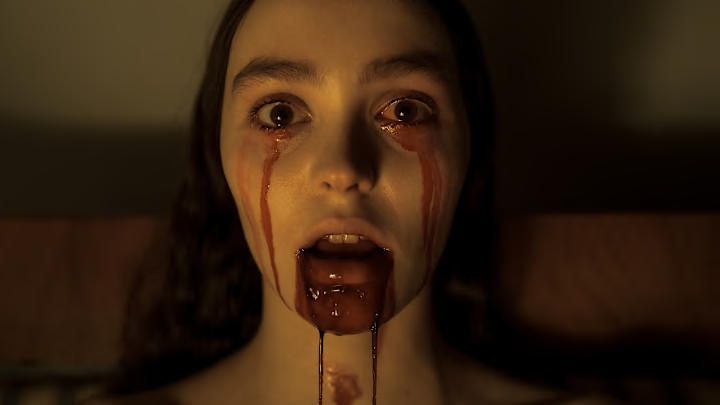Horror and film history fans are lucky that prints of Nosferatu: A Symphony of Horror (1922) survived court-ordered destruction after losing a copyright lawsuit by Bram’s widow, Florence Stoker. For decades, only the most hardcore horror fans comprised its enduring audience.
Present-day audiences' renewed fascination with the menace of Count Orlok began when writer-director Robert Eggers reimagined the vampire and German expressionism’s nightmarish images for modern screens. Serious horror fans can let the original Nosferatu and the remake inspire them to explore three classics of German expressionist horror.
The Cabinet of Dr. Caligari (1920)
Director Robert Wiene's The Cabinet of Dr. Caligari (1920) rivals Nosferatu as the most famous and critically acclaimed of the German Expressionist horrors. The plot focuses on the evil hypnotist Dr. Caligari, who controls the sleepwalking Cesare to commit murders. While many filmmakers would borrow the deceptively simple narrative with much less effectiveness in the coming years, none could match the distorted terror of the original.
German Expressionist horror films reflect a “nightmare come to life.”Caligari fits this description, as its psychological and emotional distortions mimic a frightening dream from which no one can wake up. The feature’s twist ending also helped pioneer what would become a staple in the horror genre.
Faust (1926)
Nosferatu’s director, F.W. Murnau, later helmed Faust – A German Folktale (1926), a silent, live-action version of the legendary cautionary tale. The evil demon Mephisto bets an archangel he can corrupt a pious man’s soul. Faust, an alchemist, accepts the demon’s proposal, initially intending to use the powers to gain knowledge, but gives in to Mephisto’s dark and lustful temptations.
Faust does not replicate Goethe’s tragic and melodramatic presentation of the title character’s life and fate. The film utilizes expressionist elements, such as warped, shadowy visuals, departing from the traditional stage presentations. The approach brings out the tales’ nightmarish horrors.
Waxworks (1924)
Director Paul Leni helped establish the horror anthology format that Amicus would make famous in the 1960s and 1970s. Waxworks collection uses a wax museum as a backdrop to feature tales of Ivan the Terrible and Jack the Ripper. These two historical characters create an opportunity to present black-and-white stark terror.
True to the dark spirit of German Expressionism, Waxworks evokes terror from emotional and psychological dread. The strange, off-kilter set design in the Ivan story and the surreal lighting during the Ripper tale help replicate a nightmare come to life—the stylistic signature of the movement.
That style endures today, as the new Nosferatu film reveals.
